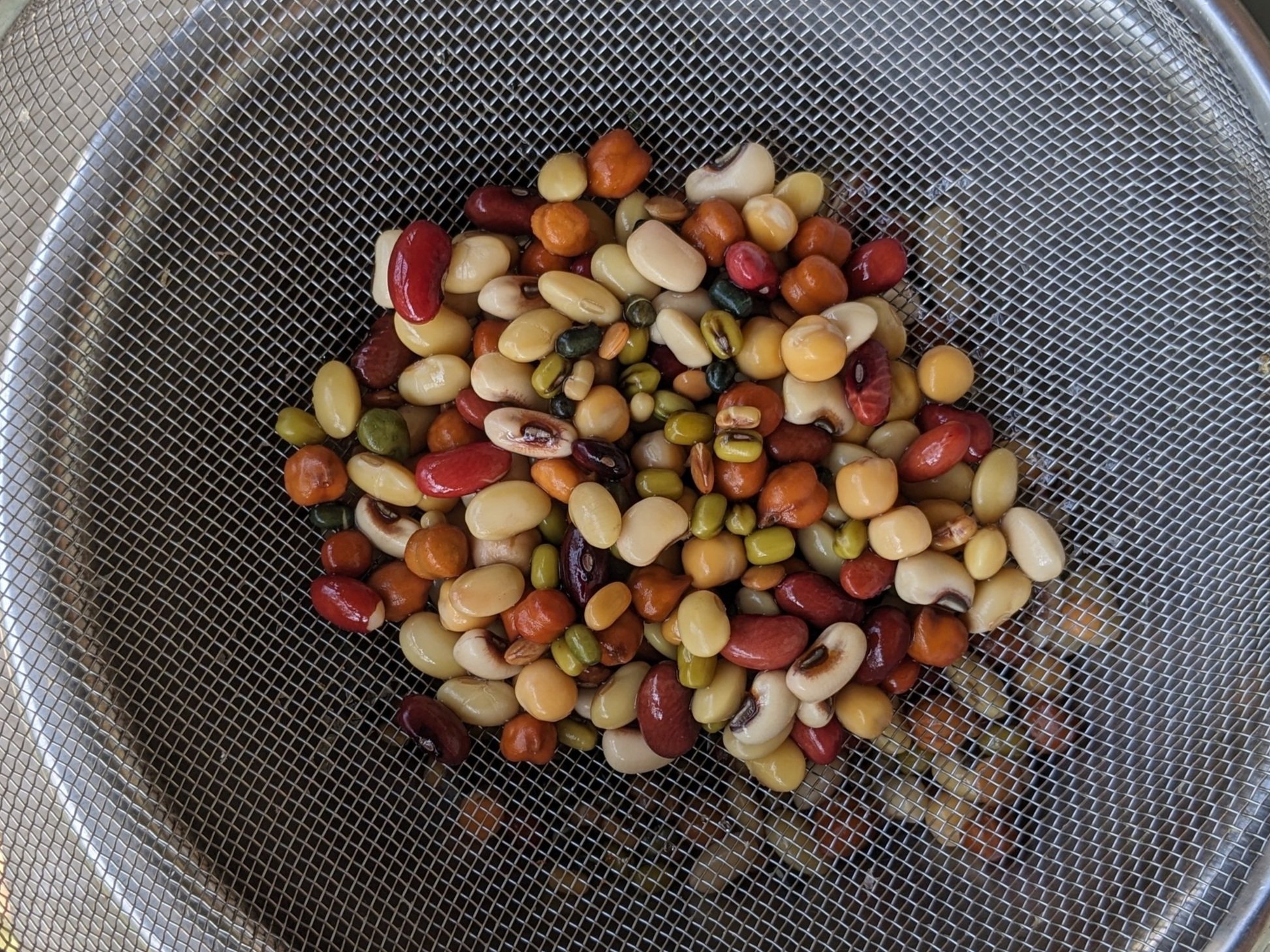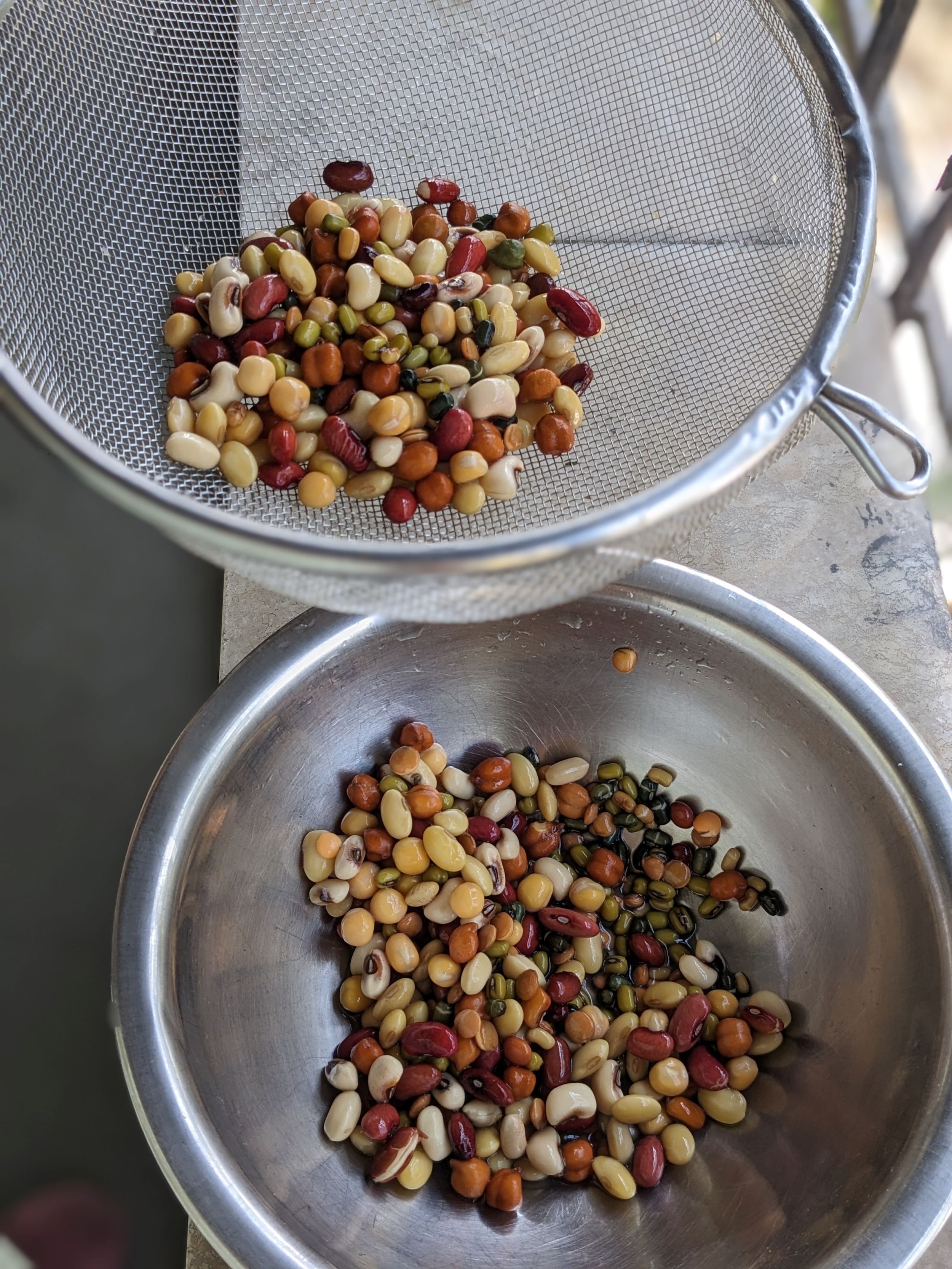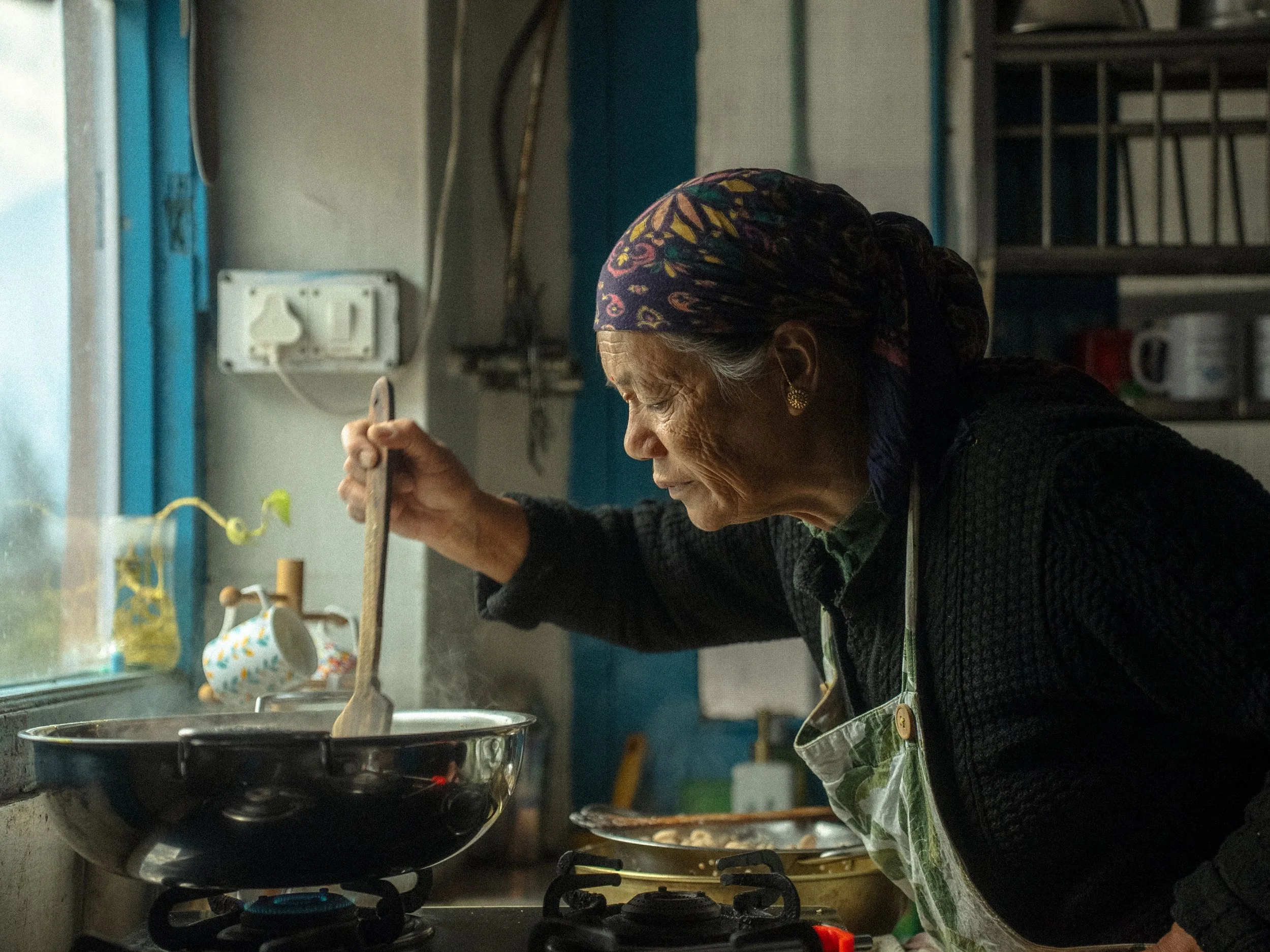How to Cook the Misal We All Want to Eat

Goya’s new series is one in which we explore the basics of home cooking and being comfortable in the kitchen. Helmed by food writer Amrita Amesur, this column is a return to the idea of cooking as self-care, arming with you with resourcefulness, practicality, and a sense of humour.
Amrita guides us as we chalk out a few hours each week to live and eat more mindfully. “Cooking isn’t just a task to be outsourced. It pays dividends in health (and joy!) to stay involved in the happenings of the kitchen!” In this edition, she prepares that most beloved dish of brothy beans – Misal.
Far before the TikTok girls and Alison Roman made beans chic, there has been Maharashtrian misal, biding its time in the shadows. With its array of soaked and sprouted beans, slow cooked in a fiery red tarri made with traditional Marathi masala blends such as kaala and goda masala – it’s a hearty bean broth necessarily mopped up with good bread, and characterized by a sea of crispy farsan and raw red onion for textural contrast. There is nary a week in the last three years that I’ve not actively and joyfully cooked and eaten misal!
The dish is not without its detractors: those who consider it a bit of a hodge-podge, excessively spiced, and cousin of the traditional usal (where it originates from). Traditional Marathi-speaking families detest this street food iteration, with its stray moth beans in favour of the simpler sprout-heavy broth made at home. Chef and creator Keertida Phadke went so far as to say that most non-Marathi folk know not of the delights of usal but the mis-hap that is misal “buried under the weight of people pleasing, senseless spices and an assault of oil.” Thanks to Keertida’s protestations, we now know what not to do when building a home version of this incredible street snack – there will be plenty of beans, the oil will err on the safer side, spices will be measured, and it will definitely be people pleasing.
The famed contemporary Marathi food bible Pangat by Saee Koranne Khandekar similarly relegates misal to street snack status, not to be counted as part of the traditional Marathi repertoire of home cooking, but as Saee admits “has now entered home kitchens for its one-pot appeal”.
I do get the appeal.
The question to now ask is, do I want to eat a bowl full of moong or matki? Probably not. The way to get past the mild bore that is usal (sorry) is to add an array of different beans to the mix! Small, large, creamy, meaty – this blend of various legumes and beans keeps things fun, satiating and interesting, giving variance in each bite especially when paired with the array of fun accompaniments.
Misal has encompassed years of soul-pleasing, nourishing mid-week suppers for me, when really nothing else sounds good and one is about to descend into an endless scroll of take-out menus. If you’re anything like me, you’re far more likely to eat your sprouts for the week when it comes with this spicy broth, and you’re more likely to eat this plethora of sprouts in misal than anywhere else. Don’t be surprised if friends and family start mysteriously appearing on misal nights to tuck in.
The trick to making a good misal? Read on.
Beans!
Gift yourself a repository of all manner of beans and legumes — moong, matki, rajma, masoor, chawli, kala chana, kulith, kabuli chana, and soybeans. The more the merrier! Mix them up and store them in a large dry container for easy access. Soak the beans before going to bed and toss out (most of) the water the next morning. By evening, you will be greeted with little sprouts. Let time do the work for you. All you got to do is provide a warm, cozy and moist space for it to flourish, so stick it in the air fryer or a recently warmed oven to expedite the process.
Choose a mix of different beans and legumes to make your misal heartier.
Masala
Get your hands on good quality kaala masala, sometimes also called ghaati masala, that wonderfully smoky, dark garam masala. I lean heavily on it to lend punch and complexity to the broth. Go to your local Marathi wares store or masalewaala at the market and they can rustle up a blend for you. Or order it promptly from Aazol. You could just as easily use a kaanda-lasun masala — you can make at home using Saee’s recipe from Pangat.
Farsan
You must absolutely commit yourself to Chitale Bandhu’s Farsan here. I will entertain no debates on this front – this is the ideal farsan for your misal. It has the perfect blend of crispy-crunchy-sev-gathiya things with hits of fennel seed. The best farsan is the one being freshly prepared near you, just make sure it’s a balance of sweet, salty, peanut-ty and spicy.
Accompaniments
While some of us may not know it yet, fresh pav is a luxury to bask in. If ever you must eat pav at home, let it be with misal. The tender insides are ideal to mop up the brothy beans. If you’re feeling the need for more heft in your bread, I urge you to toast up some sourdough and layer the beans on top with some raw red onion and lime.
Ensure you make the dish yours. Do you prefer red onion with a squeeze of lime and chopped coriander on beans instead of a shower of farsan? Or maybe both? Then choose those accompaniments. Do you like homemade rotis instead of storebought bread? Get that. At its foremost, this bowl of misal should certainly please you.
Let me shepherd you in your journey to cooking and eating more fun nourishing suppers.
Misal
(Yields 4-5 bowls)
Ingredients
½ cup mixed beans
Dry spices
1 tbsp kaala masala
1/2 tsp garam masala
2 tsp dry coriander powder
1/2 tsp red chili powder
Tempering
1/2 tsp mustard seeds
1/4 tsp hing
One stick curry leaves
One dried red chili
1 - 2 tsp amchur/dry mango powder
Aromatics
1 medium sized onion finely chopped
3 medium sized crushed /blitzed tomatoes
3-4 cloves of grated garlic
1-inch grated ginger
Accompaniments and Garnish (pick any or all)
Fresh laadi paav or toasted bread
Chopped red onion
Chitale Bandhu farsan or other spicy sweet nutty farsan mix
Wedges of lime
Chopped coriander leaves
Fresh plain yogurt
Method
Soaking and sprouting the beans: Soak a mix of various beans overnight. Once soaked, drain beans and leave a bit of soaking water back, to sprout the beans. Keep a lid on and toss every few hours until sprouted - about another 12 hours.
Cook beans: pressure cook the beans with two- three times the volume of water to beans and salt, cook until softened entirely through. Check three or four of the largest beans for doneness before decanting.
Decant the cooker and in the same pot, start a tempering with oil, mustard seeds, hing until seeds pop. Also toss in curry leaves, maybe a snipped dried red chilli.
Add in finely chopped onion, the grated ginger and garlic, some salt and lightly brown the onion and aromatics until brownish and fragrant.
Tip in the blitzed tomatoes/use crushed canned tomatoes.
Add in dry coriander powder, kaada masala, garam masala, amchur, some more salt and cook until the tomatoes and spices are cooked and oil releases from the gravy. Idea is for this to become the concentrated base gravy before adding in the beans. Taste the gravy and adjust per preference.
Add in the beans with all their boiled broth and stir through. Bring to a boil with the gravy, simmer on medium flame about 10-15 minutes and it's done.
As the beans sit, they become more flavoursome. I like to make it during the day to eat at night, just tastes better.
Serve hot with a squeeze of lime, fresh coriander leaves, chopped raw onion, a shower of farsan and some paav/toasted bread.
ALSO ON GOYA














